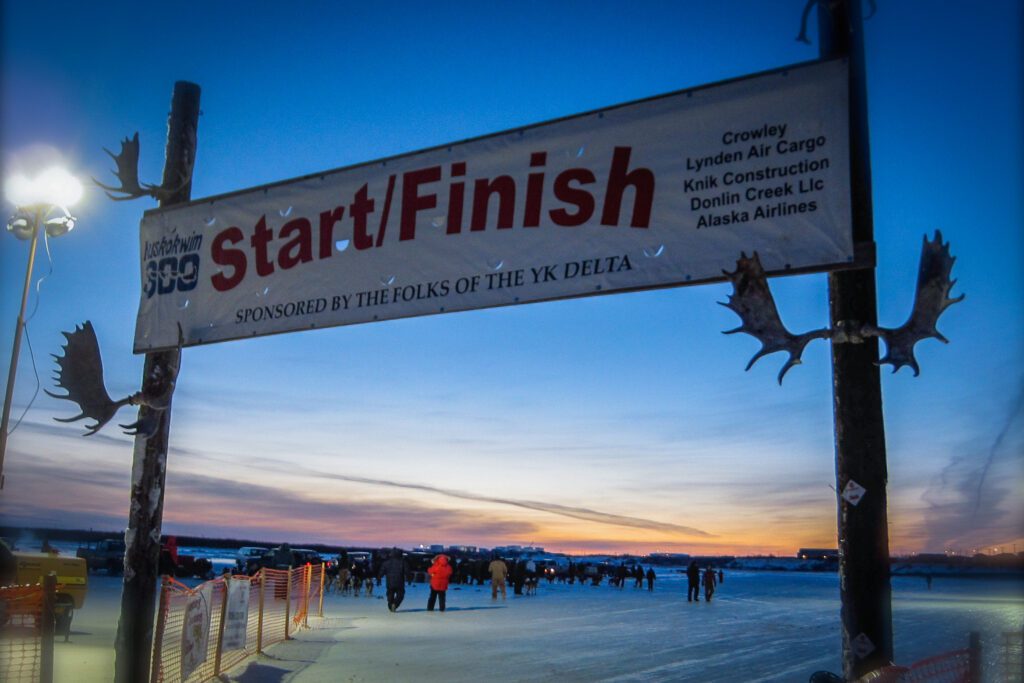A grimly familiar sight to Nome dog owners returned with the fatal goring of a local musher’s dog by a bull muskox Wednesday.
Alaska Department of Fish and Game wildlife biologist Bill Dunker said Nome police called his office Wednesday afternoon to report two dogs were injured—one fatally—in the attack before the bull muskox was killed in what Dunker calls a clear case of “defense of life or property.”
“Everything appears to be a justifiable DLP,” Dunker said.
The dogs belonged to musher Rolland Trowbridge, who ran the Kuskokwim 300 earlier this year. He also ran the Yukon Quest in February—withdrawing near the race’s midpoint. Daughter Janelle Trowbridge also ran dogs from the family kennel in her 2014 Junior Iditarod run.
Trowbridge declined to comment on the incident.
Dunker said it’s the first fatal clash between muskox, and Nome residents and their animals, so far this summer. That’s a far cry from the multiple gorings and dog fatalities seen last year, including a DLP kill of a muskox harassing a dog and a similar DLP kill in the community of Wales.
“This summer has been much better with regard to conflicts with muskox,” Dunker said. “We’re still having them on occasion, but certainly last year was kind of the ‘perfect storm’ of muskox conflicts in the Nome area. It’s certainly been the case that this year has been much less active with regard to muskox conflicts.”
But just what makes up that “perfect storm” isn’t fully understood. Dunker said “anecdotal” observations on brown bear predation may have pushed muskox into the Nome area last year. But so far this summer, that’s not the case.
“We haven’t made those same observations this year,” he said, “so we can’t say one way or the other that it was brown bear predation that was the smoking gun that ultimately drives them into the Nome area.”
Dunker said Fish and Game’s muskox mitigation is ongoing. Failed attempts last year included everything from rubber bullets to bear decoys and the spraying of bear urine. This year he said ADF&G is trying an experimental electric fence installed at the Nome airport. Biologists are still waiting to see if the fence is effective.
“But to be honest,” Dunker said, “we haven’t had a muskox bump into the fence yet. So we’re still investigating its effectiveness.”
As for the DLP kill, salvage requirements include surrendering the meat from the animal, but in this case, the meat will stay local: it’s been donated to the Nome Covenant Church. The animal’s hide and the skull were salvaged and turned over to the department.
Pastor Harvey Fiskeaux with the Covenant Church said the muskox in currently hanging in a church member’s shed, and a group from the church will be processing the meat tomorrow and putting it into the church’s freezer.
Fiskeaux said they’ll be serving muskox roasts and stew at their Friday soup kitchens beginning in September.







